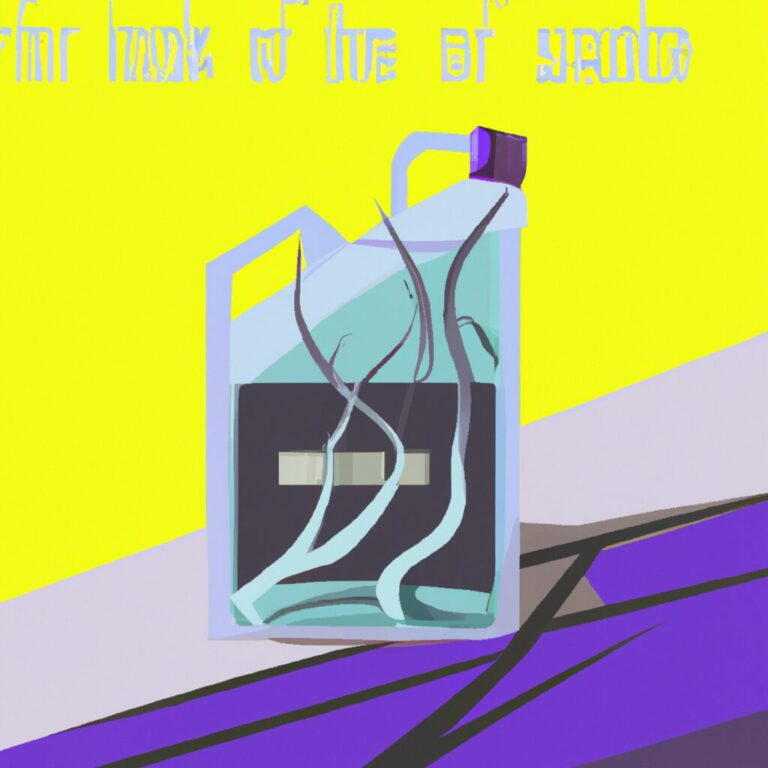How to Come to a Stop in a Manual
When it comes to mastering the art of coming to a stop in a manual transmission vehicle, think of it as gracefully slowing down a spirited dance rather than abruptly halting a fast-paced conversation.
The finesse required to execute a smooth stop involves a delicate balance of coordination and timing.
As you approach the conclusion of this paragraph, you'll discover essential tips to enhance your braking skills and ensure a seamless transition from motion to standstill.
Key Takeaways
- Gradually release accelerator and downshift for smooth deceleration.
- Apply brakes smoothly while coordinating with downshifting for controlled stops.
- Utilize engine braking and downshifting for different speed scenarios.
- Practice emergency braking by pressing clutch and brakes quickly for safety.
Proper Techniques for Slowing Down
When slowing down in a manual car, gradually releasing the accelerator while keeping the clutch engaged is essential for a smooth deceleration process. This technique allows you to disengage the engine power from the wheels, reducing speed without solely relying on the brake system.
By downshifting to lower gears, you can better utilize engine braking, which not only aids in slowing down but also helps in extending the lifespan of your brake system by reducing wear. It's crucial to coordinate the use of the brakes with downshifting to smoothly decelerate before coming to a complete stop.
Practice matching the engine speed with clutch engagement to ensure a seamless transition while slowing down. Remember to shift to neutral or engage the clutch when the RPMs drop to around 1000 to prevent stalling.
Braking in Different Speed Scenarios
To effectively manage braking in different speed scenarios in a manual transmission car, understanding gear selection and coordination with the brake system is crucial. When approaching various speeds, your braking technique plays a vital role in ensuring a safe and controlled stop. Here are some key points to consider:
- Engine Braking: Utilize downshifting while braking to maintain control and benefit from engine braking, especially when coming to a stop from higher speeds.
- Smooth Control: Apply the brakes smoothly while downshifting to match your speed when slowing down from moderate speeds.
- Efficient Stops: For gradual stops at lower speeds, using the brakes in the current gear without downshifting can be efficient and effective.
- Gear Selection: Understand the importance of proper gear selection while braking to prepare for acceleration and keep the engine in the appropriate gear.
Mastering these techniques won't only enhance your braking efficiency but also contribute to a smoother and safer driving experience in a manual transmission car.
Emergency Braking in Manuals
When faced with an emergency braking situation in a manual car, remember to press the clutch quickly and firmly apply the brakes to stop effectively.
This coordinated action helps prevent stalling and allows for a swift response to the unexpected stop.
Practicing these techniques enhances your ability to react promptly and decisively in urgent scenarios.
Quick Clutch Press
Engage in rapid clutch pressing during emergency braking scenarios in manual vehicles to disengage the engine promptly from the wheels. This technique is crucial for preventing engine stalling and ensuring a smooth stop.
To effectively utilize the quick clutch press method, consider the following:
- Practice Makes Perfect: Regularly practicing emergency stops will enhance your ability to execute a quick clutch press confidently.
- Stay Calm: In urgent situations, it's essential to remain composed to apply the technique accurately.
- Prioritize Safety: Focus on using the brake pedal while swiftly pressing the clutch to bring the vehicle to a stop without compromising safety.
- Master the Technique: Familiarize yourself with the quick clutch press to handle sudden stops efficiently in manual transmission vehicles.
Firm Brake Application
In an emergency braking scenario with a manual transmission vehicle, firmly apply the brakes and simultaneously press the clutch pedal to ensure a quick and controlled stop.
When faced with the need for an emergency stop, maintain gradual pressure on the brake pedal to bring the car to a quick halt while keeping the clutch engaged to prevent stalling.
It's crucial to practice these techniques in a controlled environment to improve your response time and enhance your ability to handle emergency situations effectively.
Remember to keep both feet on the brake and clutch pedals until the vehicle comes to a complete stop.
Mastering the coordination of brake application and clutch engagement during emergency braking will help you navigate unexpected road scenarios safely.
Braking on Various Terrains
To effectively navigate various terrains in a manual transmission vehicle, adjusting your braking technique is crucial for safe and efficient stops. When encountering uphill terrains, consider downshifting to lower gears to benefit from additional engine braking. On downhill slopes, it's advisable to utilize a combination of brakes and downshifting to manage speed and prevent brake overheating. Even on flat surfaces, engine braking can aid in gradual deceleration without relying heavily on the brakes. Proper coordination of clutch engagement while braking is essential to maintain control and prevent stalling on different terrains. Remember to adapt your braking techniques according to the incline of the terrain and the prevailing road conditions for a secure and smooth stop.
Mastering these techniques will enhance your confidence in handling diverse terrains.
Smooth transitions between gears and braking methods contribute to a harmonious driving experience.
Understanding the impact of terrain on braking empowers you to make informed decisions while driving.
Practice and familiarity with your vehicle will refine your ability to stop effectively in various conditions.
Common Stopping Errors to Avoid
When stopping in a manual transmission vehicle, be mindful of common errors to avoid for optimal performance and longevity of your vehicle. Downshifting too early can lead to unnecessary wear on the transmission. It is important to ensure that you are not riding the clutch, as this can cause premature wear. Avoid resting your foot on the clutch pedal, even slight pressure can lead to clutch wear over time. Braking too late can result in loss of control and potential stalling, so keep your foot on the brake pedal and put the car in gear. Changing gears without clutching should be avoided, as this can lead to rough gear changes and potential damage. Check out the table below for a quick reference on common stopping errors to avoid:
| Common Errors | Description |
|---|---|
| Downshifting too early | Can cause wear on the transmission |
| Riding the clutch | Leads to premature wear on the clutch |
| Resting foot on clutch | Even light pressure can cause clutch wear over time |
| Changing gears without clutching | Can result in rough gear changes and damage |
Importance of Practice and Lessons
To master the art of stopping in a manual vehicle, you must understand that practice builds skills, lessons provide guidance, and repetition enhances proficiency.
Engaging in regular practice sessions will help you develop the necessary muscle memory for smooth stops, while lessons can offer valuable insights into clutch engagement and gear selection.
Practice Builds Skills
Practice is the cornerstone for developing proficiency in executing smooth stops with a manual transmission vehicle. Regular practice helps build muscle memory and confidence, enabling you to perform smooth stops consistently.
Repetition of stopping maneuvers is crucial for reinforcing proper clutch and brake coordination, ensuring a seamless and controlled stop every time. Lessons from experienced drivers or instructors can offer valuable insights and corrections to enhance your stopping technique.
Consistent practice not only improves your reaction times but also sharpens your decision-making skills when coming to a stop in a manual transmission vehicle. Remember, practice is key to mastering the art of smooth stops.
Lessons Provide Guidance
Lessons from experienced drivers and instructors offer invaluable guidance on mastering the technique of coming to a stop in a manual transmission car. Through lessons, you can gain insights into proper clutch engagement, gear selection, and the significance of practice in developing the necessary skills.
Instructors provide tips on downshifting effectively, utilizing engine braking, and knowing when to shift to neutral when approaching a stop. Learning from experienced drivers not only enhances your understanding of these techniques but also boosts your confidence behind the wheel.
Repetition Enhances Proficiency
Enhancing proficiency in stopping a manual transmission car is achieved through the consistent repetition of practice sessions and lessons. Repeatedly practicing stopping maneuvers in different scenarios builds confidence and skill.
Here are four key aspects of how repetition enhances proficiency:
- Developing Muscle Memory: Regular practice improves muscle memory, allowing for smoother and more precise movements.
- Enhancing Reflexes: Repetition helps in reacting quickly and appropriately when coming to a stop.
- Improving Efficient Technique: Consistent practice sessions lead to the development of a more efficient technique for stopping.
- Boosting Coordination: Regularly practicing clutch, brake, and gear engagement enhances coordination skills for stopping effectively.
Frequently Asked Questions
How Do I Come to a Stop in a Manual Car?
When coming to a stop in a manual car, maintain the gear you're in while braking. Engage the clutch when the engine slows to around 1000 RPM. Shift to neutral at stoplights to avoid stalling. Remember to select 1st gear after stopping for smooth acceleration.
Should You Press Clutch When Braking?
When braking in a manual car, you should press the clutch to disengage the engine, enabling smoother stops. This clutch engagement enhances braking efficiency, allowing better control over your vehicle's speed and preventing jerkiness or transmission wear.
Do You Hold the Clutch While Stopped?
When stopped in a manual car, hold the clutch to prevent stalling. It aids in smoother gear transitions and is recommended at lights or signs. Ensure safety by controlling the clutch, idle speed, brake modulation, gear selection, and stopping smoothly.
Do You Have to Downshift When Coming to a Stop?
When coming to a stop, downshifting enhances control and balance. Utilize proper technique by matching engine speed with gear selection for smooth transitions. It's not mandatory, but it optimizes performance and prolongs brake life.
Conclusion
In conclusion, mastering the art of coming to a stop in a manual transmission vehicle is essential for safe and efficient driving.
By practicing proper techniques for slowing down, braking in different speed scenarios, and handling emergency braking situations, you can navigate various terrains with ease.
Remember to avoid common stopping errors and always prioritize practice and lessons to enhance your skills on the road.
Keep honing your abilities to ensure a smooth and controlled driving experience.


